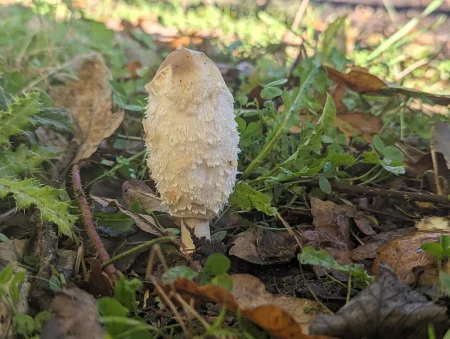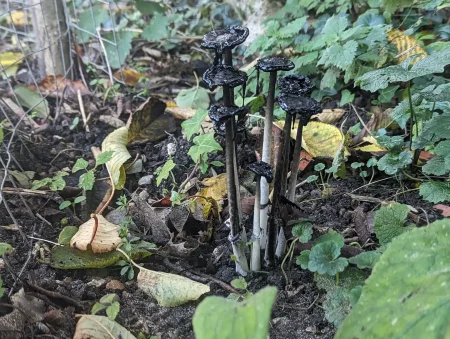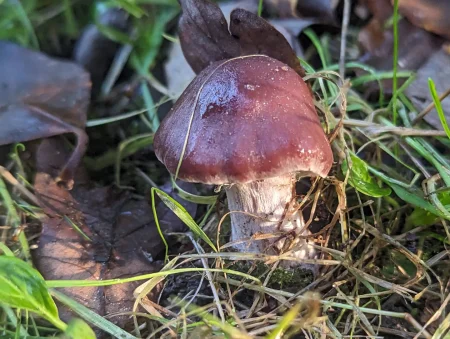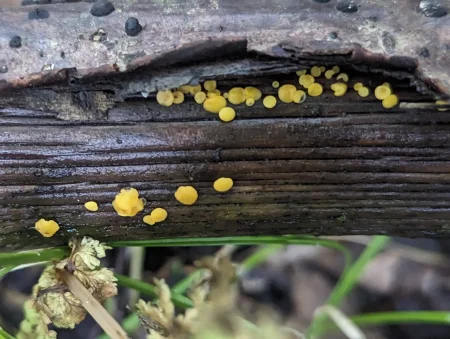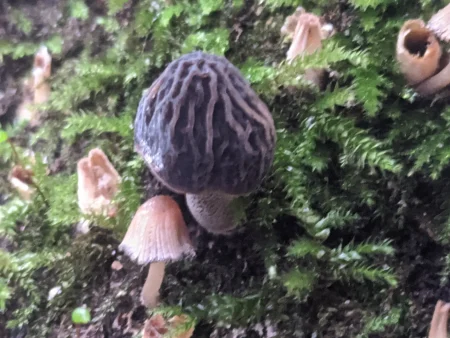Including 12th November 2023
The 12th was the day of the second Strumpshaw Fungi Walk so I have merged the two days.
I’ve only shown a few of the fungi found that day, and if you want to have a more accurate and concise list of the fungi of Strumpshaw Fen, then visit the Norfolk Fungus Study Group Website list for Strumpshaw Fen.
Today was like the previous days — sunny, but cold and damp.
ENTRANCE AREA
At the junction of Low Road and Tinkers’ Lane (leading up to the reserve), I found a few Coprinus comatus (Fig. 15.0).
I found a group of deliquescing Coprinopsis atramentaria at the reserve entrance.
BASECAMP AREA
The Mutinus caninus from previous weeks had disappeared, but I saw the remains of the Paxillus involutus.
On the Basecamp Loop, I spotted several groups of brown Cortinarius saturninus (Fig. 15.1) – this was identified by the Norfolk Fungus Study Group at the next day’s Fungus Walk.
At Basecamp, I saw the unidentified, white brackets from previous weeks.
On the Basecamp railway path, the Psathyrella piluliformis and unidentified orange fungi were still around, but the Agaricus moelleri from Day 14 had disappeared.
THE DELL
In the Dell, I saw the Trichia varia, Phleogena faginea, Rutstroemia firma and remains of the Gaestrum triplex from Day 14.
All over the leaf litter, I saw Typhula juncea and a scattered group of Mycena rosea.
The Helvella disingii were still present in the woven stick den and I saw the Lactarius tabidus from previous weeks, but on the 12th, I spotted a tiny group of Arcyria denudata (Fig. 15.2).
I found some tiny yellowish fungi (Fig. 15.3) on a twig and some Lycogala epidendrum (Fig. 15.4) on a log.
In a densely vegetated area between the Basecamp railway path and The Dell I saw a Helvella lacunosa (Fig. 15.5) and a group of Tricholoma sulphureum (Fig. 15.6) .
Arcyria denudata
The Dell
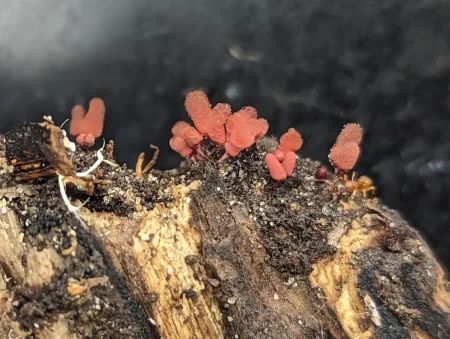
Figure 15.
Unidentified
The Dell
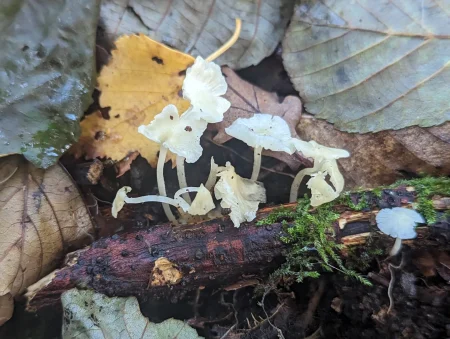
Figure 15.
Lycogala epidendrum
The Dell
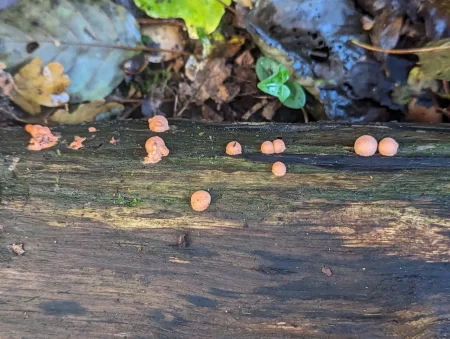
Figure 15.
Helvella lacunosa
The Dell
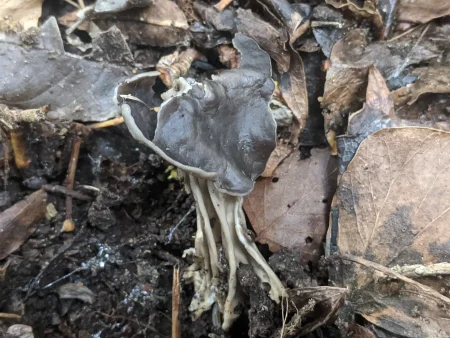
Figure 15.
Tricholoma sulphureum
The Dell
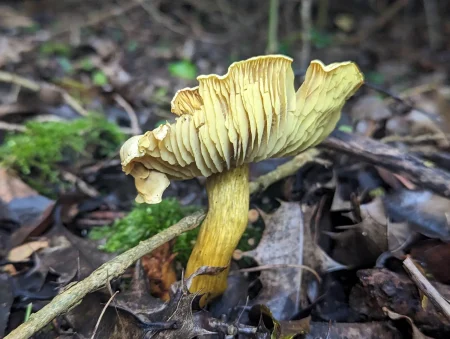
Figure 15.
SANDY GLADE AREA
The Arcyria denudata from previous weeks had disappeared.
ENCLOSED AREA
The Ascocoryne sarcoides was still around, but the Typhula juncea here had diminished.
I spotted a group of Calycina citrina (Fig. 15.7) on a rotting stick.
On the same stump as the A. sarcoides, I found a weird fungus (Fig. 15.8) which had a morel-like surface.
YEW GROVE AREA
Just before The Outpost, I found a white Exidia nucleata (Fig. 15.9) on a mossy branch.
I also spotted a large group of Pholiota squarrosa (Fig. 15.10) at the base of an Alder and a Mycena (Fig. 15.11) species on an abandoned pallet.
Exidia nucleata
Yew Grove Area
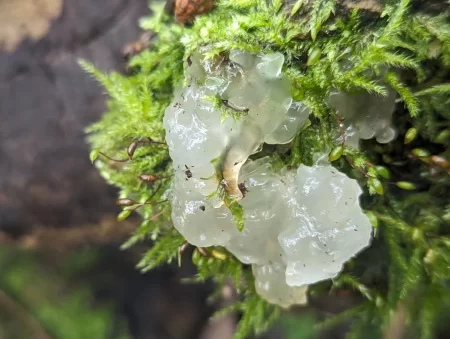
Figure 15.
Pholiota squarrosa
Yew Grove Area
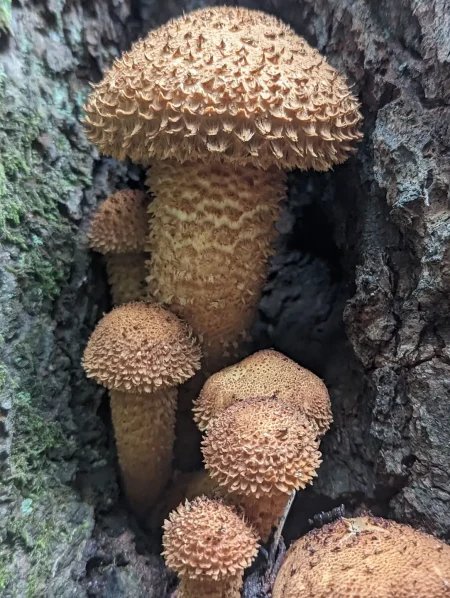
Figure 15.
Mycena species
Yew Grove Area

Figure 15.
OUTPOST AREA
The Bulgaria inquinans was still around in The Outpost.
TRAIL END AREA
There were more groups of larger Apioperdon pyriforme and, nearby what looked like Aleuria aurantia (Fig. 15.12).
I found two brackets, one a hoof-shaped Fomes fomentarius (Fig. 15.13) and a reddish brown Daedaleopsis confragosa (Fig. 15.14).
I also found a Tremella mesenterica (Fig. 15.15) on a twig and nearby, a white Stemonitis plasmodium (Fig. 15.16).
At the end of the trail, I saw a particularly purple group of Phlebiopsis crassa (Fig. 15.17) on a Birch tree.
Aleuria aurantia
Trail End Area
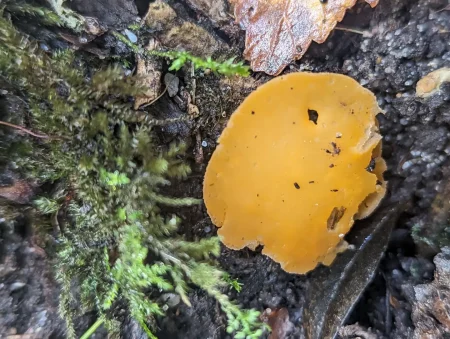
Figure 15.
Fomes fomentarius
Trail End Area
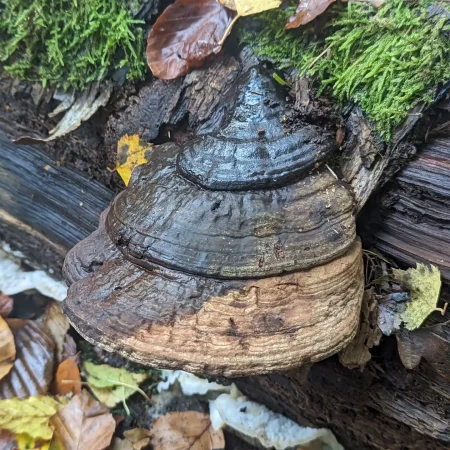
Figure 15.
Daedaleopsis tricolor
Trail End Area
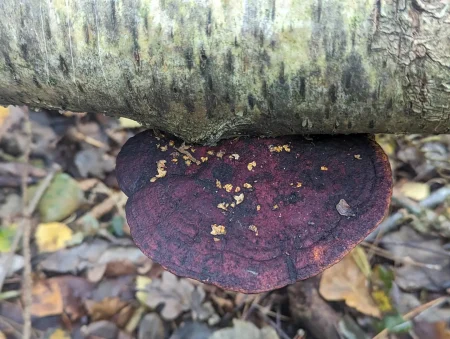
Figure 15.
Tremella mesenterica
Trail End Area
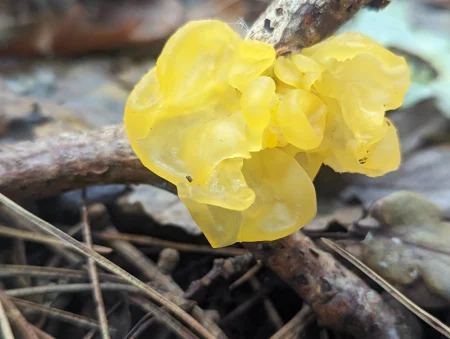
Figure 15.
Stemonitis species
Trail End Area
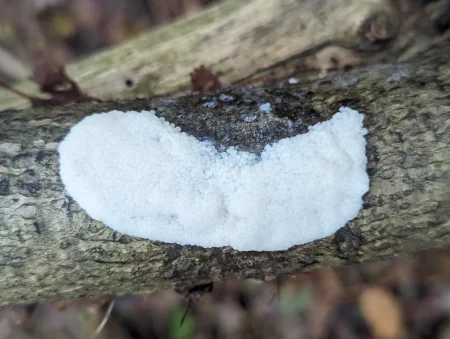
Figure 15.
Phlebiopsis crassa
Trail End Area
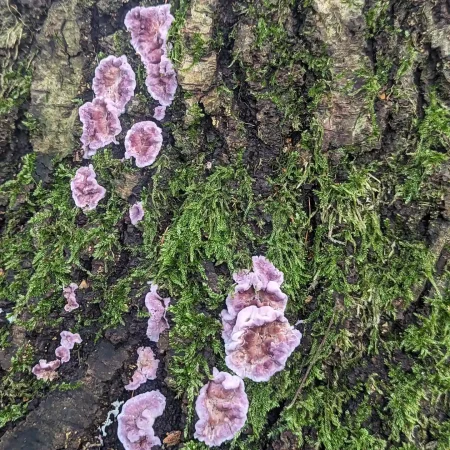
Figure 15.
OTHER
The Hebeloma crustuliniforme was still around throughout The Dell and the Basecamp Area.
I found Trichia varia throughout the reserve woodland and what I think is Phlebia tremellosa.
